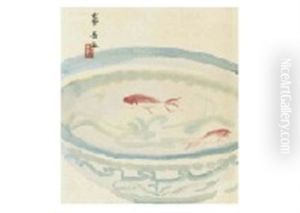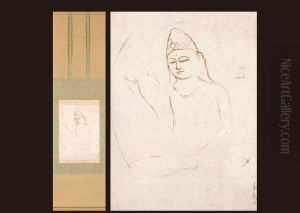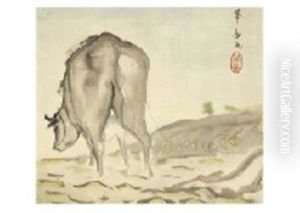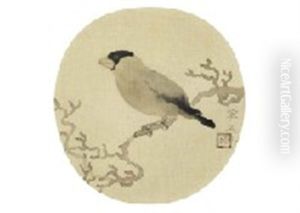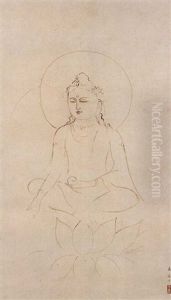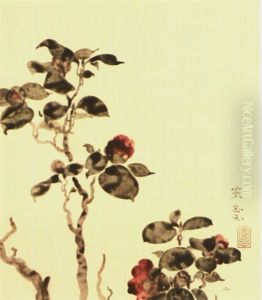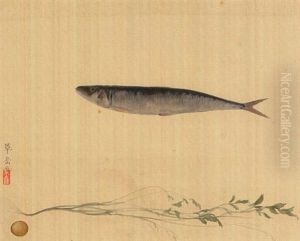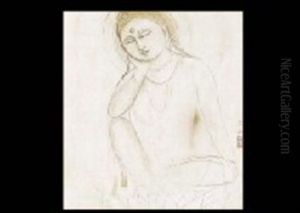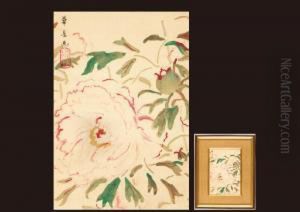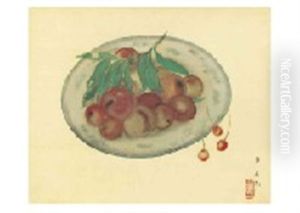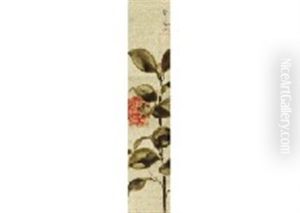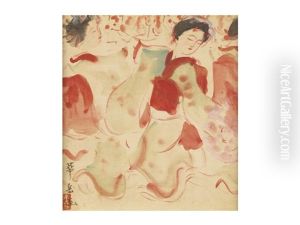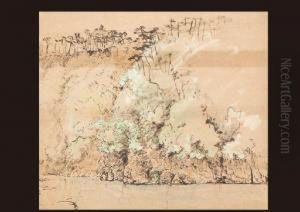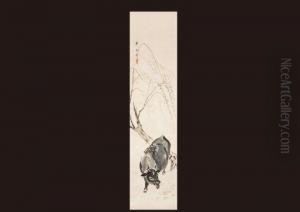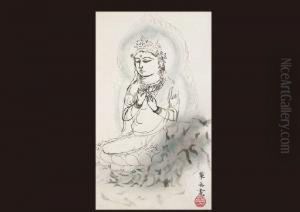Kagaku Murakami Paintings
Kagaku Murakami was a Japanese nihonga painter, known for his contributions to the Japanese painting scene during the Taisho and early Showa periods. Born in 1888 in Tokyo, Murakami grew up in a time when Japan was experiencing rapid modernization and westernization. Despite these influences, Murakami was deeply interested in traditional Japanese painting techniques and aesthetics.
He studied under the famed nihonga artist Kanzan Shimomura, who was a prominent figure in the art world at the time. Under Shimomura's guidance, Murakami mastered the techniques of nihonga, which emphasized the use of traditional materials such as washi (Japanese paper), sumi (ink), and iwaenogu (mineral pigments), while also exploring subjects and themes from Japanese history and folklore.
Murakami's work is characterized by its delicate beauty and often incorporated elements of the natural world, a common theme in nihonga painting. He was known for his meticulous attention to detail and his ability to evoke a sense of tranquility and reverence for nature in his work.
During his career, Murakami exhibited his work at various governmental exhibitions, such as the Bunten, Teiten, and Shin Bunten, which were the official art exhibitions sponsored by the Japanese government. His works were well-received, and he gained a reputable status among his contemporaries.
Tragically, Kagaku Murakami's life was cut short when he died in 1939 at the age of 51. Despite his relatively short career, his contributions to nihonga have been recognized posthumously, and his paintings continue to be appreciated for their beauty and adherence to the traditional values of Japanese art in an era of great change.
